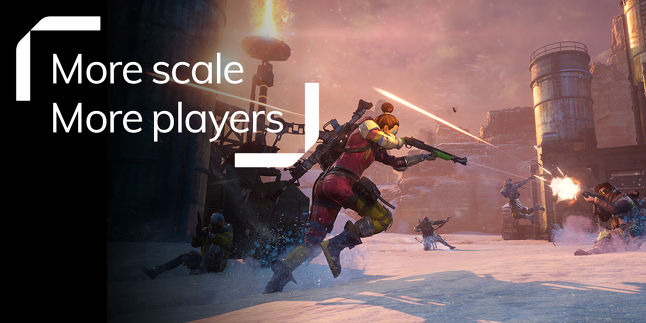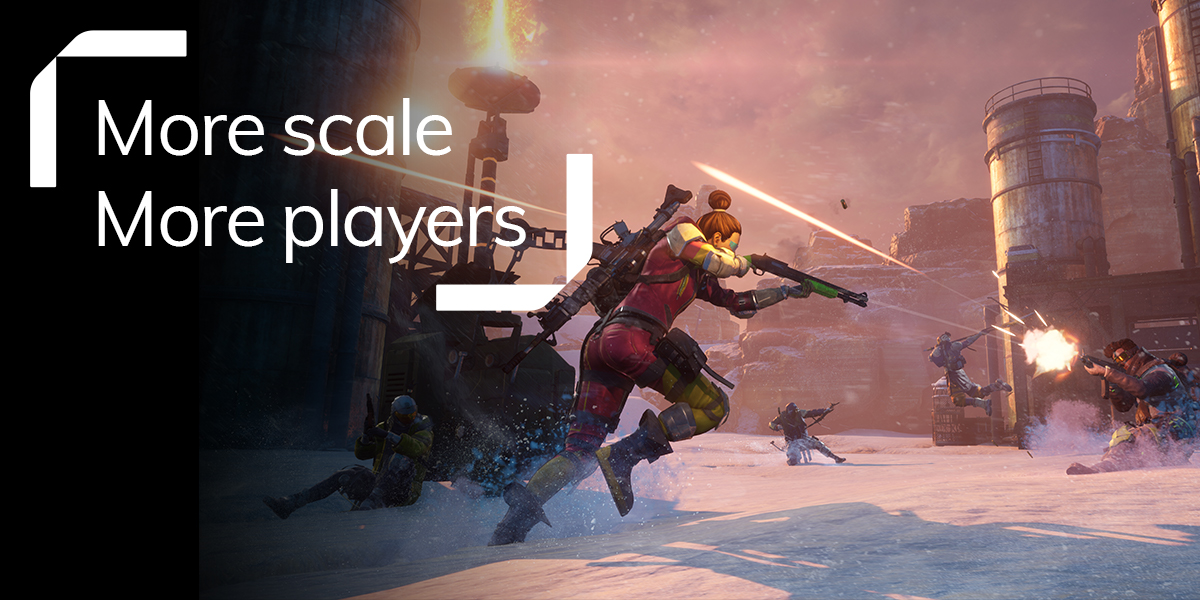For game designers, ‘finding the fun’ is a serious undertaking. In a competitive market, more fun equals more players, equals a thriving and happy community.
The question is: how do you create a retentive, rewarding experience that gamers connect with and come back to over and over?
Technical constraints can inhibit design, or force innovation
Of course, ambitious game designs require corresponding support from the backend tech, which can pose an added challenge for small studios with limited resources.
Co-founder of Midwinter Entertainment Josh Holmes admits that when it comes to multiplayer games, simulating complex worlds “can put a lot of strain on the server that you’re utilising.” But building in-house solutions to push or exceed server limits is technically difficult, making it risky as well as expensive.
What makes a game fun is up to the players
There are a whole host of theories on how to make a fun game.
“The development approach that I favour,” begins Holmes, “is one where you get ideas stood up as early as possible in a playable form, put them in front of players and learn through observation, through data, and through feedback about how to improve that experience. Therefore, having that ability to iterate is really, really key.”
The vision for Scavengers, he explains, is “a sandbox survival shooter that allows players to go on endless competitive adventures.” Midwinter Entertainment set out to create an alternative to the standard shooter that indexes towards mechanical skill as the key definer of how likely you are to win.
“We wanted to offer different skills that would play a really important role, so things like preparation, strategy, adaptation, collaboration,” Says Holmes. Bringing these other skills to the fore meant creating “this very dynamic world that is causing players to constantly adapt on the fly.” To do that, the team introduced richly layered threats and dynamic elements that challenge players throughout their sessions.
Scavengers development was influenced by Halo’s Warzone
Several of the Midwinter Entertainment team — Holmes included — had attempted something comparable in 2015 with Halo 5’s 24-player multiplayer mode, Warzone.
“What we learned through that experience is just how complex it can be to try to balance the level of simulation that’s possible within a single game server,” Holmes recounts. Back then, it meant making some compromises.
In order to avoid doing the same this time, they faced two huge challenges with Scavengers. The first was creating a complex, AI-heavy world combining player-versus-environment with player-versus-player, where 60 players working in teams of three are joined by a total of 300 active non-player characters (NPCs). The second was getting the game playable as early as possible in order to gather feedback and iterate.
So, how did a small studio like Midwinter Entertainment achieve such technical prowess?

Increasing scale helped Midwinter Entertainment find the right balance
In the first instance, leveraging SpatialOS from Improbable Multiplayer Services (IMS) allowed the team to exceed the limits inherent to single-server architecture by offloading AI onto a second server. Because the various elements aren’t competing for resources, they can have hundreds of active AI at any given time, alongside a large-scale, dynamic world and a high player count. According to Holmes, being able to experiment with scale led them “to discover some of the things that are most fun in the game today.”
In the second instance, using SpatialOS in combination with the IMS playtest hub meant Midwinter Entertainment could put a large-scale representation of the Scavengers experience in front of gamers from an early stage, in order to observe player behaviour, gather data, and collect feedback that would inform the game’s development.
“Any time you’re doing something that isn’t just taking an established pattern that already exists in the market, you’re on a search. You’re trying to discover what is fun,” says Holmes. “Finding the fun is half the job of any game developer. And so getting the game stood up, iterating with players as part of that development process, I believe, is the key to discovering fun.”
IMS helps unlock your design ambitions
As a networking engine that gives you easier access to more compute, and comes with the added benefit of specialist tech support from game developers who understand the challenges of building large-scale game worlds, SpatialOS “solves a lot of the complexity of the networking problem, but it also gives you that scalability so you’re not committed to a particular set of constraints that may be true at the beginning of your conceptualisation and prototyping of an experience,” says Holmes.For more information. Click here.
Stay in touch
Want insider insights on multiplayer development, straight to your inbox?
Subscribe for updates
Contact us
GamesIndustry.biz
Source link
Related Post:
- Finding the fun: How Midwinter Entertainment improved Scavengers gameplay with rigorous testing
- Fallout 76’s new water parks make the wasteland fun — perhaps too fun
- Top 10 best simulation games for iPhone and iPad (iOS) | Articles
- Football simulation game UFL is a free-to-play rival to FIFA and eFootball
- See Anubis and His Scale in the New SMT V Video
- 1/7th scale Marth figure due out July 2024, new photos and pre-orders open
- Valheim – Hearth and Home Will Scale Blocking Power Based on Health
- WHAT IS INFINITE LAGRANGE? - SCI-FI SPACE SIMULATION INTO THE UNKNOWN (Walkthrough Gameplay)
- exploring a new era of management simulation – PlayStation.Blog
- Crimesight, Mystery Simulation Game, Announced by Konami
